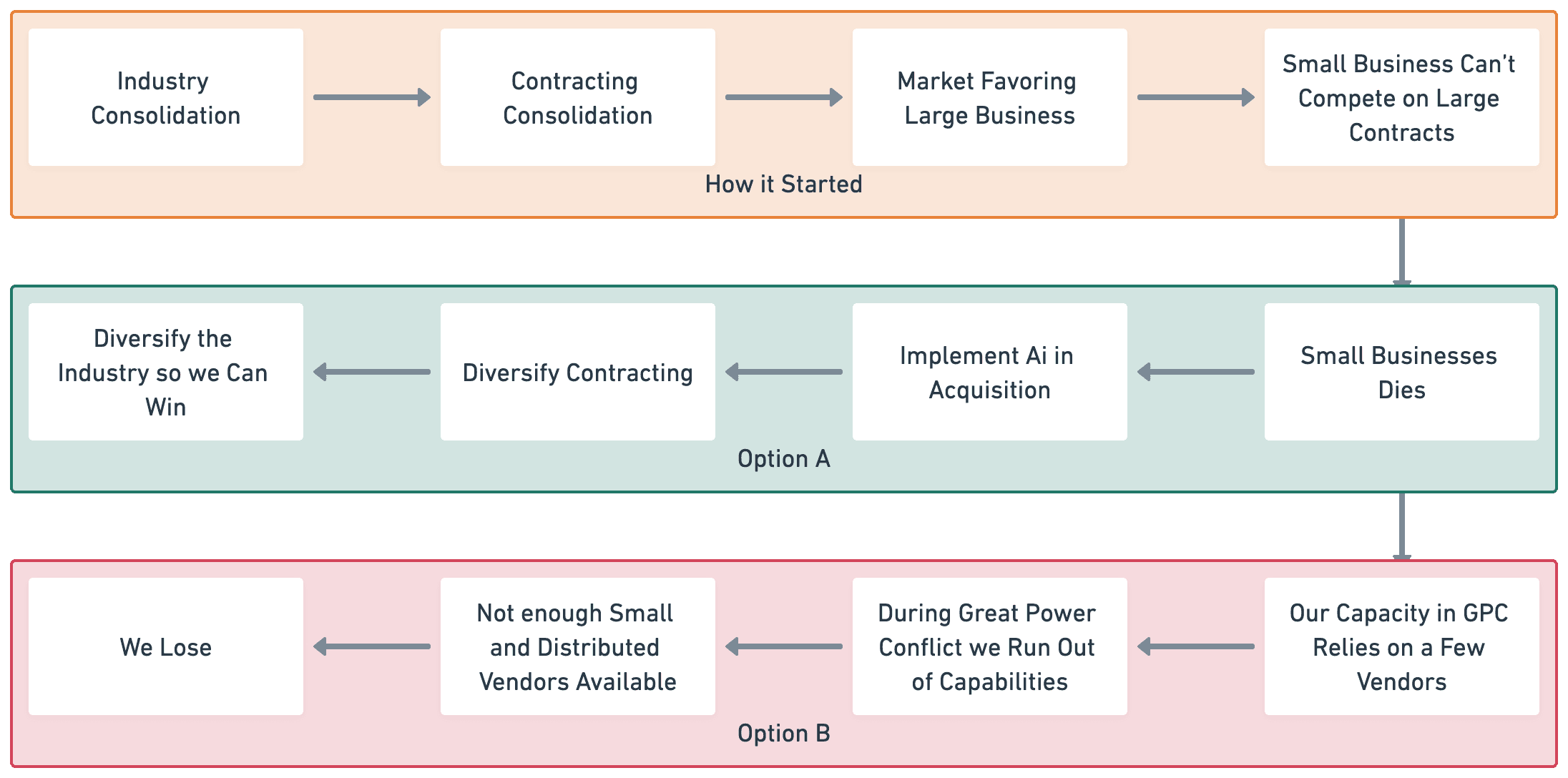Information
Why Acquisition is Critical in GPC
BLUF: As the adage goes: amateurs talk strategy, experts talk logistics - we don't have the personnel capacity to sustain the acquisition necessary to win the next war. We can't hire enough acquisition professionals to keep pace, need AI for to close the gap for the next war.
Sep 23, 2024

AI for combat capabilities is unquestionably important, it will undoubtably help us win in great power competition and great power conflict.
We equally need AI for all of the "back office" processes if we plan to win. As Omar Bradley old adages go: "amateurs talk strategy while professionals talk logistics" and Napoleon before him "armies march on their bellies" point to the same reality: you can't win a war that you can't supply.
The modern context of these adages put the spotlight on acquisition and contracting. The somewhat anecdotal example of the Ukraine conflict and the resulting shortage of 155MM artillery rounds and other munitions points to two facts:
The United States will need greater industrial capacity to keep pace with a large-scale GPC conflict
A GPC conflict will likely result in shortage of a much broader range of capabilities
The problem is, we lack the organizational capacity to rebuild the industrial capacity.
The cascading consequences of our decisions—from the “Last Supper” defense industry consolidation in the 1990s to the hollowing out of the Small Business Community (SBC)—have left our industrial base structurally unprepared for the challenges of modern warfare. Even with the increasing participation of startups and venture-backed companies like Anduril and Shield AI, the second and third-order capabilities of our industrial base are sorely lacking. We cannot rely solely (or even primarily) on large companies in the next fight, if we had to activate the economy the way we did during World War II, we would max out the large primes in the first three months and be left wanting with empty magazines.
Here's the problem, the entire acquisition process shifted towards consolidated action. The wholesale shift toward large, multiple-award, indefinite-delivery, indefinite-quantity (IDIQ) contracts—contracts that are largely out of reach for small businesses—makes it structurally infeasible for us to keep pace in a great power conflict. These massive contracts favor established defense giants, sidelining the small and innovative companies that are crucial for a resilient and responsive supply chain. The shift helped address the decline in contracting personnel, while those sidelined small companies died, and have been dying for decades.
To put it perfectly plain: consolidation of contractors -> consolidation of contracting -> reduction of acquisition capacity
Here's the problem: great power conflict -> rapid increase in contracting demand -> insufficient contracting capacity

The solution to these challenges is straightforward: to reinvigorate the small business industrial base, which is inherently necessary to support the and diversify from the large business industrial base, we must create real opportunities for small businesses. We need to move a major portion of acquisition away from oversized contracts that small businesses struggle to compete for and transition to smaller, more agile contracting methods. The problem is this shift necessitates more government personnel to manage and support an increased number of smaller contracts—a persistent challenge given workforce constraints.
Here’s where the relationship becomes clear: by adopting artificial intelligence in acquisition processes, with intelligent and intuitive workflows, we can empower our existing workforce to handle a greater volume of acquisitions efficiently.
Leveraging AI and automation will enable us to support the small business base more effectively, which in turn bolsters the large business base necessary for large-scale conflict. Our future readiness depends on modernizing our acquisition processes. Embracing these technologies is not just an option; it’s a necessity to ensure our industrial base is robust, responsive, and capable of meeting the demands of future conflicts.
Without these changes, we risk facing adversaries better prepared and more agile than we are—a risk we cannot afford. The time to act is now, before the next conflict tests the very foundations of our national security infrastructure.